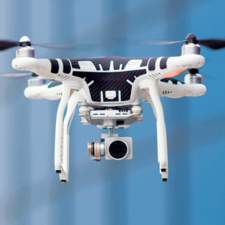Blog
The 6 Technology Trends that are Revolutionizing the Custom Manufacturing Industry

Summary
Today’s custom manufacturing industry in the US and Canada is more competitive and faster moving than ever. Businesses need to understand the latest technology trends and quickly adopt the ones that could improve their top and bottom lines through one of four key metrics:
- Reduced cycle time: As custom demands evolve, organizations face mounting pressure to accelerate cycle times to gain a competitive edge. Manufacturers can use emerging technologies to bring products to market, accelerate their supply chain operations and get custom orders out to customers as quickly as possible.
- Continuously improved quality: Competing on quality creates a race to the top when manufacturers work to improve products without creating excess costs or slowing product delivery to detrimental effect.
- Agility / flexibility: Greater degrees of customization can help manufacturers align with changing market requirements, get ahead, and put the processes and capabilities in place.
- Improved efficiency: Optimizing operations to drive efficiency plays a critical role in gaining a lead over competitors.
Businesses can achieve these goals through innovation – advances in their processes, technology, and business models
Businesses can achieve these four goals through innovation – advances in their processes, technology, and business models. Today’s post focuses on staying competitive through advances in technology, specifically six trends that are transforming the custom manufacturing industry: The Internet of Things, Advanced Analytics, Robotics, 3D Printing, Augmented Reality, and Drones.

Trend 1. Internet of Things
The IoT, also known as Industry 4.0, is empowering manufacturers to gain a higher degree of transparency over their operations. Sensors distributed not only throughout the factory, but also on machines functioning in remote locations, can report back on inventory levels, operating conditions, device performance, and similar details that allow companies to take action.
For example, a company that manufacturers and maintains vending machines can use the IoT to track a variety of metrics. One such option would be to monitor usage in real time so delivery drivers can handle the precise inventory required at each stop, monitor the machine conditions, and complete each stop more efficiently.

Trend 2. Advanced Analytics
All of the data gathered by IoT devices can be used to provide real-time data analytics and inform strategic and operational decision-making processes. Analytics can, for example, empower companies to perform more precise preventative maintenance and predictive failure analysis. In the case of this hypothetical vending machine manufacturer, an analytics program would take performance data gathered from machines and empower users to put them into action. Some of the types of data that can be gathered include:
- Performance data that informs maintenance workers when they may need to adjust coolant levels or replace a part to prevent an outage.
- Temperature information that would reflect a problem and alert personnel to check on the machine before failure occurs.
- Usage data that helps maintenance personnel identify the best times to perform repairs and similar tasks to avoid disruption for customers.
- This feedback can be used to improve product design and manufacturing.
These are just a few ways an analytics program backed by the IoT can transform operations. All of these functions add up to reduced cycle times, better demand forecasting and reduced downtime, driving revenue gains.

Trend 3. Robotics
Robots have come a long way from the basic stamps, drills and similar machines that began transforming factories decades ago. Today's robots are capable of:
- Using sensors to identify how different materials fit together, allowing them to engage in assembly and specialist tasks like welding.
- Improving quality control and efficiency by replacing potentially error-prone humans with robots.
- Empowering human laborers to focus on high-thinking tasks and other forms of value creation that have taken a backseat to production in the past.
- Operating more flexibly - switching between material types, paints and projects - more easily than humans would.
All of this adds up to a much more flexible, efficient production environment that empowers manufacturers to shift away from a build to stock model to a build to demand methodology. This is particularly effective in custom manufacturing, as organizations can become more responsive and adaptable when their operations are built around demand instead of creating and managing stock.

Trend 4. 3D printing
Like robotics, 3D printing has evolved a great deal in recent years. Unlock robotics, the technology is still fairly new and is only beginning to transform operations in manufacturing. At their simplest form, 3D printers take raw materials and combine them to create real-world objects based on schematics. This is popularly used to take CAD drawings and bring them to life through various plastics. However, 3D printers have evolved to work with a wide range of materials - even strong ones like carbon fiber. They also range in size from small, delicate machines to ones the size of a house, capable of creating large objects.
Implementing 3D printers can have a transformative impact on diverse operations, including prototyping and inventory management. Ultimately, 3D printing lets companies develop additive manufacturing capabilities, taking raw materials and bringing them together to create a product, eliminating scrap and other types of waste.

Trend 5. Augmented reality
Augmented reality can create a clearer idea of how a custom product would work in real life, creating new opportunities for operational efficiency and customer interactions.
For example, imagine your customer is looking to purchase a custom in-ground swimming pool for their back yard. Instead of showing them a drawing, you could bring a tablet to their property and, with a live view of the actual build site, show them a virtual image of the installed pool as if it were already in the ground. Paired with tools to edit the product’s configuration, you could make edits to the pool’s size or shape on the fly, helping them visualize the product in a real way, and ultimately increasing the odds for a sale.

Trend 6. Drone delivery
Shipping and logistical options are changing as drones allow for streamlined product delivery. When combined with solutions like 3D printing, a workflow including drones could look something like this:
- A customer calls at 10 a.m. to make a custom order.
- The request is processed and sent out to the 3D printer by 11 a.m.
- By noon, the item has been printed and is being carried by a drone to the customer.
- The custom good reaches the customer that afternoon, just a few hours after the initial call.
Drones may seem like a small touch, but combined with these other tools, they can enable custom manufacturers to take on entirely new business models.
To check out other new trends, check out our free e-Book: Unbounded Manufacturing for even more. If you have any questions, feel free to contact an abas representative today.


